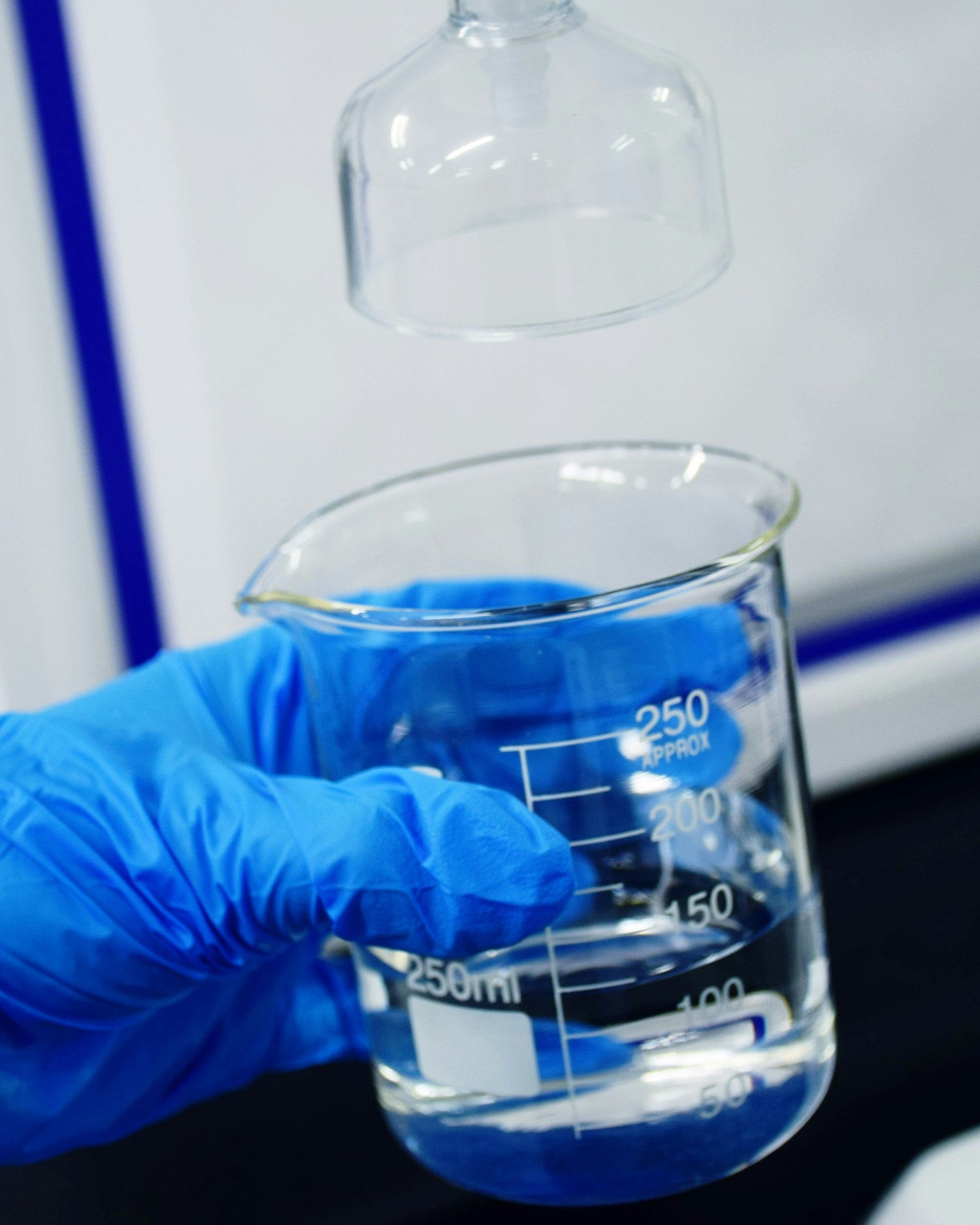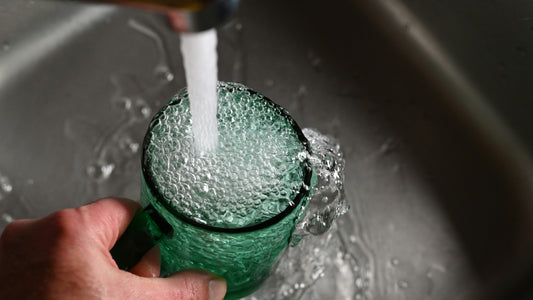
Free Water Testing in Ontario
Stop Guessing! Know what's in your water.
We test any water sample for FREE for the following properties:
- Hardness
- Iron
- Total Dissolved Solids (TDS)
- Sulphides
- pH
How to read results from Water Testing?
Hardness
Hardness is natural in ground water & is affected by how much calcium, magnesium & Manganese naturally occurs in the water table you are sourcing. The higher the number, the more hardness that is in your water. Typically, a hardness of under 5 Grains per Gallon (GPG) is fine for normal use. Anything above that will cause a taste to occur and when heated, a white or slightly grey colour can show on your fixtures, appliances & cooking pots. The natural hardness in your water is safe to consume, but is not good for your appliances, faucets & pots etc. It also affects the potency of your detergents & soaps!
The higher the hardness, the more product you will need to clean & wash. Removing all hardness through use of a Water Softener (with the use of sodium to treat it), offers a silky feel to your water, allowing no calcium, magnesium or manganese to pass through.
Sulphides/Sulfides
Sulphides/Sulfides in water are compounds containing sulfur in its lowest oxidation state. They can exist in various forms, including hydrogen sulfide (H₂S), bisulfide (HS⁻), and sulfide (S²⁻) ions. Hydrogen
sulfide, a colorless gas with a characteristic rotten egg smell, is highly soluble in water and can be toxic at high concentrations.
Sulfides in water can originate from natural processes such as the reduction of sulfate by sulfate-reducing bacteria in anaerobic environments, or from human activities like wastewater discharge and landfill leachate.579 In aquatic environments, sulfides can decrease water quality, affect the taste and odor of water, and be harmful to aquatic life.
Sulfides can also have therapeutic benefits when present in low concentrations in mineral waters, which are traditionally used to treat skin, respiratory, and musculoskeletal disorders.
The concentration of sulfides in water can vary widely depending on factors like pH, temperature, and the presence of oxygen. For example, at physiological pH (7.2-7.4), only about one-third of the
sulfur exists as H₂S, while the rest is in the form of HS⁻.
- Water quality guidelines often include default guideline values for sulfides to protect aquatic ecosystems, but these guidelines are not federally enforceable.
- A toxic gas that can be harmful to aquatic life and humans at high concentrations.
- A form of sulfur that exists in water solutions and can be present in therapeutic mineral waters.
- An ion that can be present in water, but is less reactive than H₂S and HS⁻.
Sulfides in water can be measured using various methods, including colorimetric and iodometric techniques, which typically measure the total sulfide concentration in the solution.
Ferric Iron
Ferric Iron also known as oxidized iron r red-water iron, is a form of iron found in well water that appears as visible reddish-brown particles, often referred to as "red water iron". It is insoluble and does not dissolve in water, making it visible as suspended particles or sediment. Ferric iron is the result of ferrous iron reacting with oxygen from the air. This form of iron can be filtered out using advanced filtration systems.
Ferrous Iron
Ferrous Iron, also known as "clear-water iron," is a form of iron that is soluble in water and does not appear visibly in the water until it is exposed to oxygen and oxidizes, turning into ferric iron. When water containing ferrous iron is left standing, it can turn red or brown due to this oxidation process.
Ferrous iron is often found in deep wells where the water has had less exposure to sunlight and thus has not oxidized. It can cause staining and affect the taste and smell of water, even though it is not immediately visible when the water is first drawn.
To remove ferrous iron from well water, water softeners or iron filters such as manganese greensand filters can be effective. Water softeners are commonly used for low levels of ferrous iron and can remove up to 10 mg/L of iron, though 2 to 5 mg/L is a more common limit.
Total Dissolved Solids (TDS)
Total Dissolved Solids (TDS) in water refer to the amount of organic and inorganic materials, such as metals, minerals, salts, and ions, dissolved in a particular volume of water. These materials are so small that they pass through a filter with 2-micrometer (nominal size, or smaller) pores.
TDS can originate from natural sources like mineral springs and salt deposits, as well as from human activities such as sewage, urban and agricultural runoff, and industrial wastewater. Common constituents of TDS include calcium, magnesium, sodium, potassium, carbonate, bicarbonate, chloride, and sulfate.
The level of TDS in water can affect its taste, smell, and appearance. For instance, water with a TDS level between 300-500 parts per million (ppm) is considered ideal, as it likely contains minerals and does not taste flat. However, water with a TDS level between 1000-2000 ppm is not recommended for drinking.
Water quality standards for TDS vary by region. In the United States, a secondary water quality standard of 500 mg/L has been established to
ensure palatability of drinking water. In Canada, an aesthetic objective of ≤500 mg/L has been set for TDS in drinking water.
TDS levels can be measured using a digital meter that measures the water's ability to conduct an electric current, which is directly related to the concentration of dissolved ionized solids. This method provides an approximate value for TDS concentration with around 10% accuracy.
In summary, TDS in water are dissolved particles that can affect water quality and are measured to ensure the water is safe and palatable for consumption.
pH (Potential of Hydrogen
pH (Potential of Hydrogen) is a measure of how acidic or basic a solution is, indicating its hydrogen ion concentration. The pH scale ranges from 0 to 14:
A pH of 7 is neutral, which means the solution is neither acidic nor basic. Pure water at 25°C (77°F), for instance, has a pH of 7.
Importance of pH in Water:
Aquatic life is sensitive to pH levels. Many species thrive in a specific pH range.
Water quality is often assessed by its pH level, influencing treatment processes.
Soil pH affects nutrient availability for plants.
Measurement:
pH can be measured using pH indicators, litmus paper, or electronic
pH meters. Regular monitoring is essential in various fields, including environmental science, agriculture, and chemistry, to maintain optimal conditions.
Understanding the pH scale helps in various practical applications, from ensuring safe drinking water to improving agricultural practices.
Blog posts
View all-

Replacing Water Filters and Cartridges - How to...
Potential signs to look out for and general guidelines. If you have an undersink water filter or whole home water filter, it might be time to consider replacing your filter...
Replacing Water Filters and Cartridges - How to...
Potential signs to look out for and general guidelines. If you have an undersink water filter or whole home water filter, it might be time to consider replacing your filter...
-

Advantages of Water Treament in your Home
Water treatment is the process of improving water quality. Water treatment can remove contaminants in water so that it is safe for human consumption from drinking or for everyday use.
Advantages of Water Treament in your Home
Water treatment is the process of improving water quality. Water treatment can remove contaminants in water so that it is safe for human consumption from drinking or for everyday use.
-

What is the Reverse Osmosis System? How can we ...
Reverse Osmosis is a water filtration process that uses a semipermeable membrane to separate ions, unwanted molecules and larger particles from drinking water. Simply, reverse osmosis is a process that...
What is the Reverse Osmosis System? How can we ...
Reverse Osmosis is a water filtration process that uses a semipermeable membrane to separate ions, unwanted molecules and larger particles from drinking water. Simply, reverse osmosis is a process that...
Still Need Help?
Contact us for more information our visit our local stores in Fergus and Shelburne.



